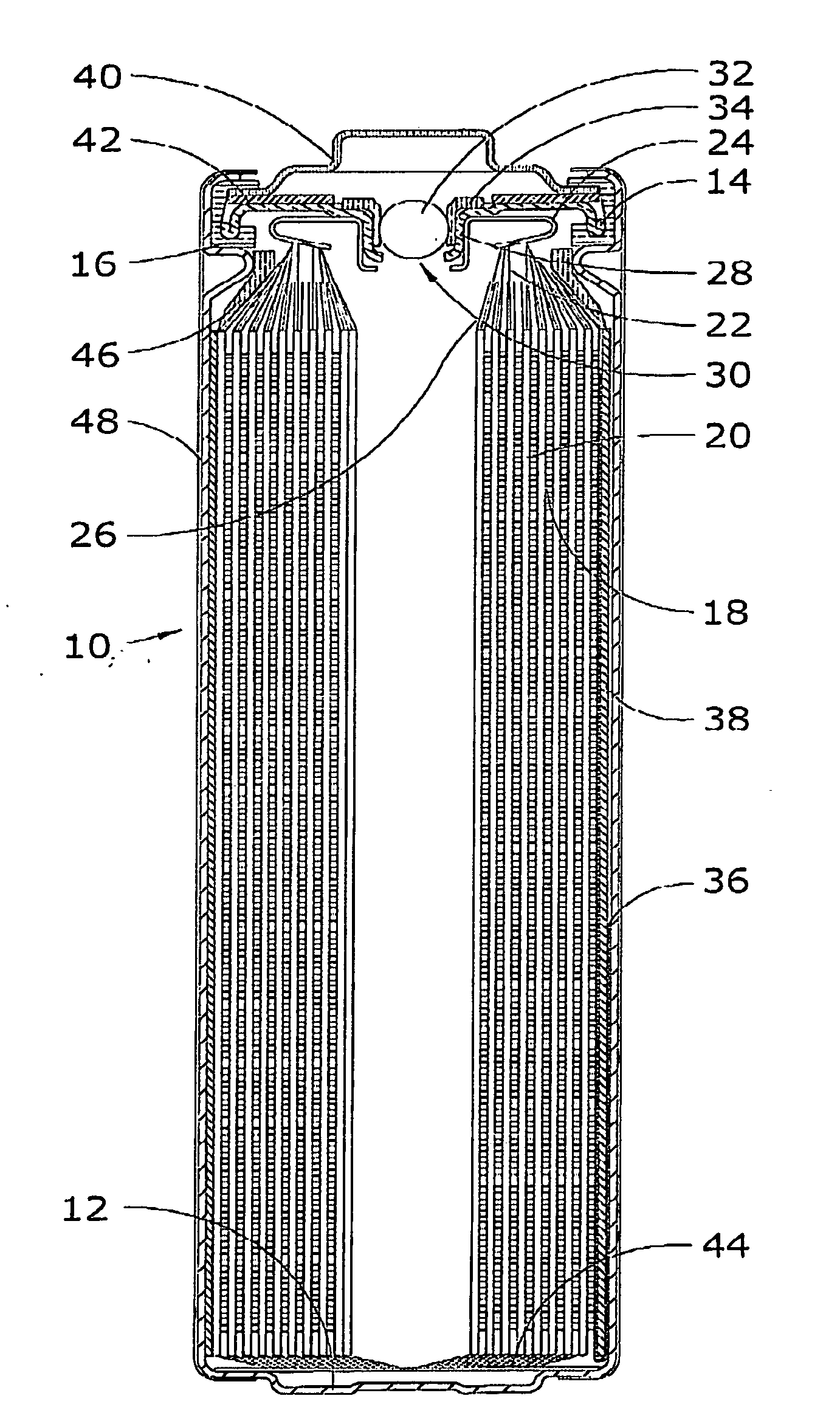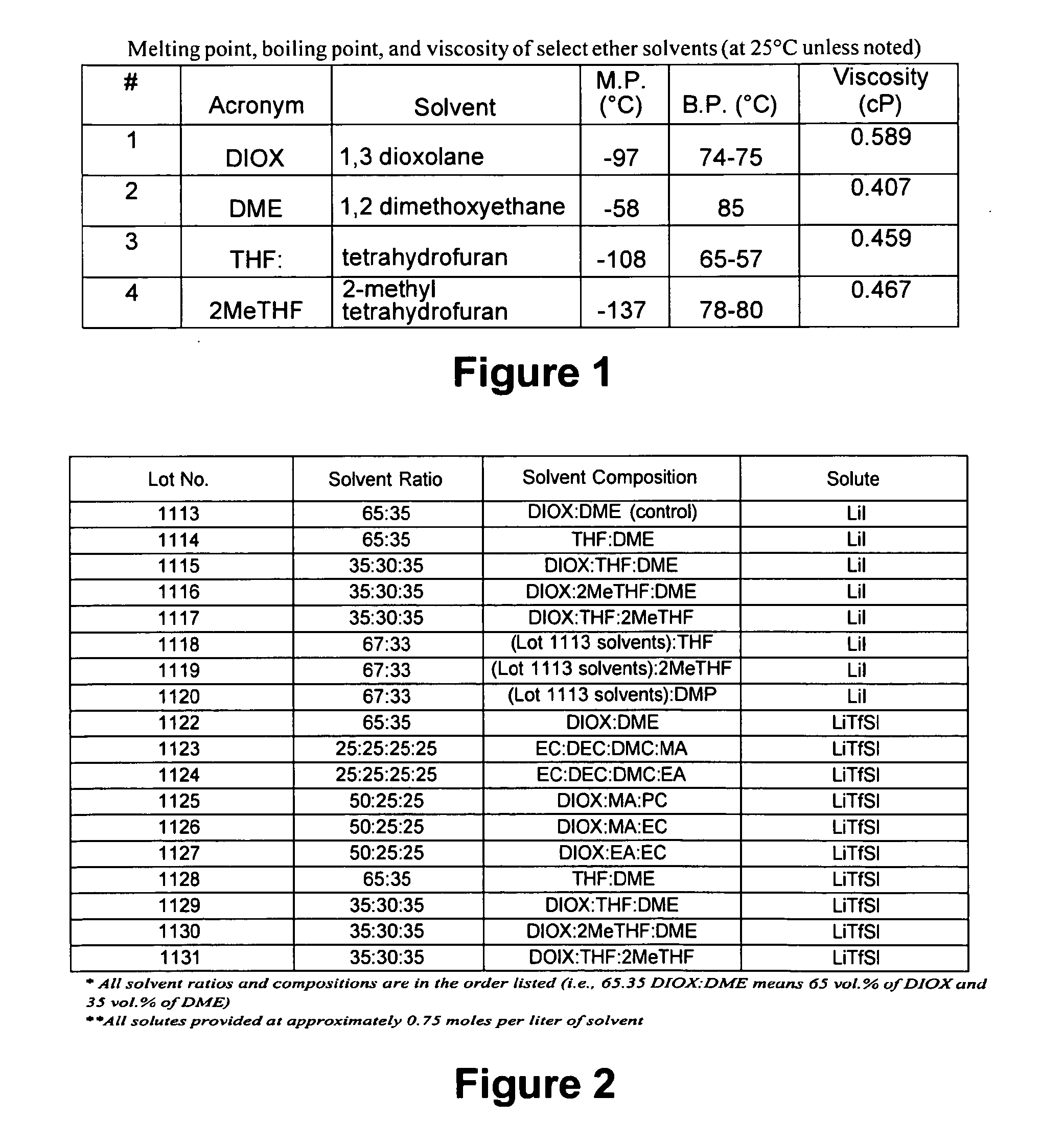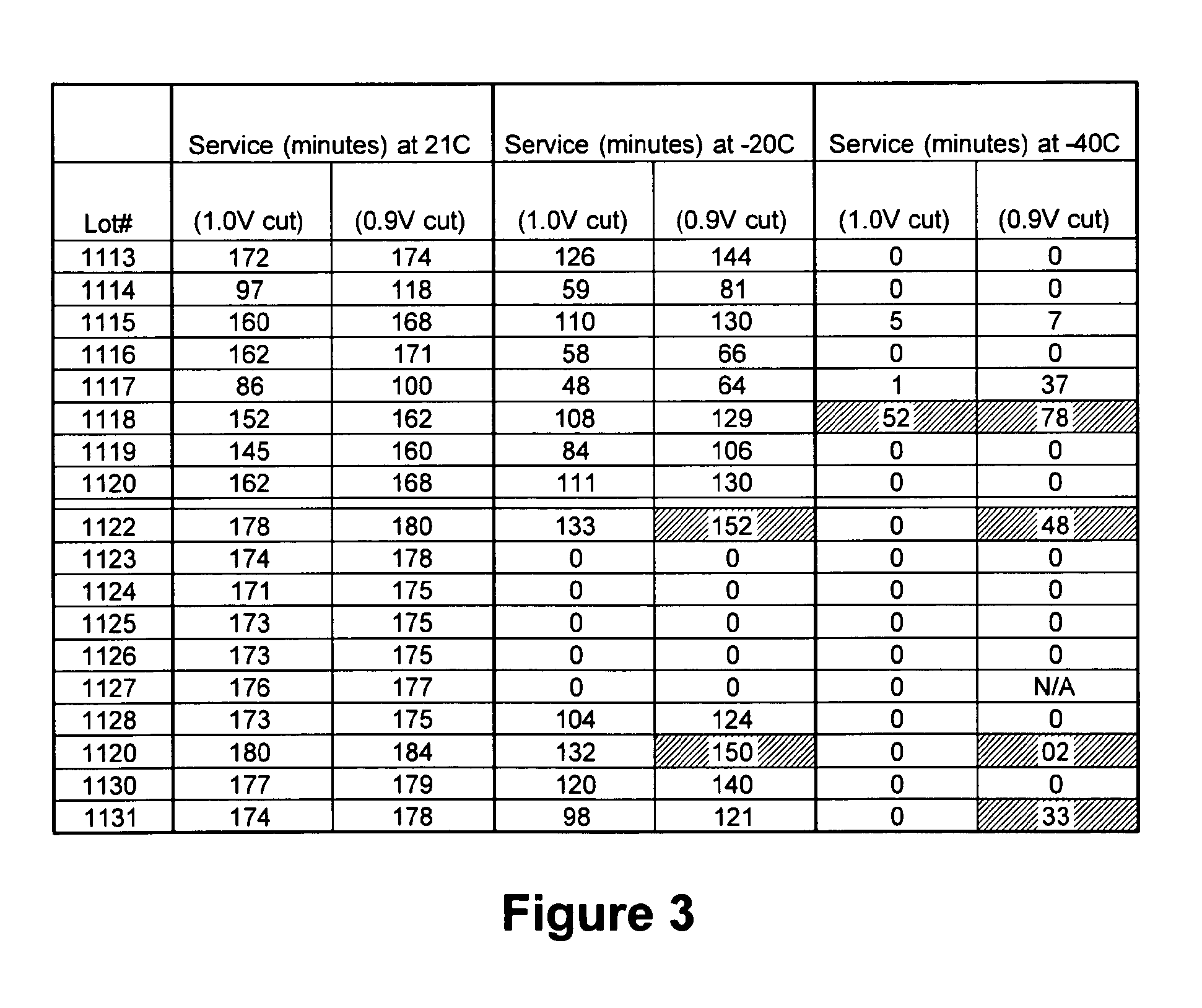THF-based Electrolyte for Low Temperature Performance in Primary Lithium Batteries
a lithium battery, low temperature technology, applied in the direction of non-aqueous electrolyte cells, cell components, electrochemical generators, etc., can solve the problems of difficult prediction of the discharge performance of the cell, difficult selection of an appropriate electrolyte system, and low electrical conductivity of the electroly
- Summary
- Abstract
- Description
- Claims
- Application Information
AI Technical Summary
Benefits of technology
Problems solved by technology
Method used
Image
Examples
example 1
[0077]Cells were constructed in accordance with the information contained in FIGS. 1 and 2. These cells were cooled down from 21° C. to 0°, −20° and −40° C. The cell impedance data was recorded by sweeping the frequency from 65 kHz to 1 Hz after 1 hour equilibration at each temperature.
[0078]In comparison to the “control” electrolyte having only DIOX and DME, the addition of THF, 2MeTHF, and DMP suppressed the cell OCV slightly while the addition of PC and EC into DIOX-containing solvents increased the cell OCV significantly. Cells using Li imide had slightly higher OCV than cells using LiI salt as well.
[0079]In terms of cell ohmic impedance, the control lot using 65:35 DIOX:DME (all ratios presented herein are volume ratios blended at room temperature) solvent blend had the lowest impedance when using LiI salt. THF and 2MeTHF increased impedance slightly if the solvent blend contained both DIOX and DME. However, impedance was very large for THF-DME and DIOX-THF-2MeTHF blends using ...
example 2
[0080]A signature test was conducted with cells from Example 1 (including the cooling regimen described therein) being continuous discharged at progressively lower drain rates, with standardized rest periods after the cutoff voltage (for comparison's sake, both to a 1.0 and 0.9 volt cut) is attained. The cell is then tested at the next drain rate and test is run until complete. However, for the initial 1A discharge, a short current interrupt of 100 mS for every 1 minute of discharge was used, during which the cell ohmic resistance can be observed. For all the low temperature tests, the test schedule also has a 5 hour delay built in to allow a minimum of 2-3 hour dwell time at the specified test temperature.
[0081]FIG. 3 summarizes the service on the 1A step of the signature test at three different temperatures (21°, −20° and −40° C.). When the salt was switched from LiI to Li imide, they performed the same as or only slightly worse than the control solvent lot. This is mainly due to ...
example 3
[0086]Further tests were conducted with cells from Example 1 (including the cooling regimen described therein) but this time with LiI electrolytes using DIOX:DME:THF solvent blend with optimized compositions for best performance at low (−40° C.) and ambient temperatures.
[0087]The cells in this example demonstrate an unexpected benefit on −40° C. as compared to previous teachings (e.g., see reference by Mastuda et al. JES, 131, 2821).
[0088]The solvent compositions were optimized using Design Expert® version 7.1.3 by Stat-Ease, Inc. Thus, the following optimal solvent composition with emphasis on improving low temperature performance of the cell was 57.3 wt. % DIOX, 23.8 wt. % DME and 18.9 wt. % THF.
[0089]More generally, the range of solvent compositions that can solve the −40° C. “sudden death” problem include DIOX at 25-70 wt. %; DME at 0-67 wt. % and THF at 10-80 wt. %. These values were extracted from a series of experiments, documented in FIG. 8.
[0090]Binary DIOX-THF systems, eit...
PUM
| Property | Measurement | Unit |
|---|---|---|
| wt. % | aaaaa | aaaaa |
| wt. % | aaaaa | aaaaa |
| wt. % | aaaaa | aaaaa |
Abstract
Description
Claims
Application Information
 Login to View More
Login to View More - R&D
- Intellectual Property
- Life Sciences
- Materials
- Tech Scout
- Unparalleled Data Quality
- Higher Quality Content
- 60% Fewer Hallucinations
Browse by: Latest US Patents, China's latest patents, Technical Efficacy Thesaurus, Application Domain, Technology Topic, Popular Technical Reports.
© 2025 PatSnap. All rights reserved.Legal|Privacy policy|Modern Slavery Act Transparency Statement|Sitemap|About US| Contact US: help@patsnap.com



